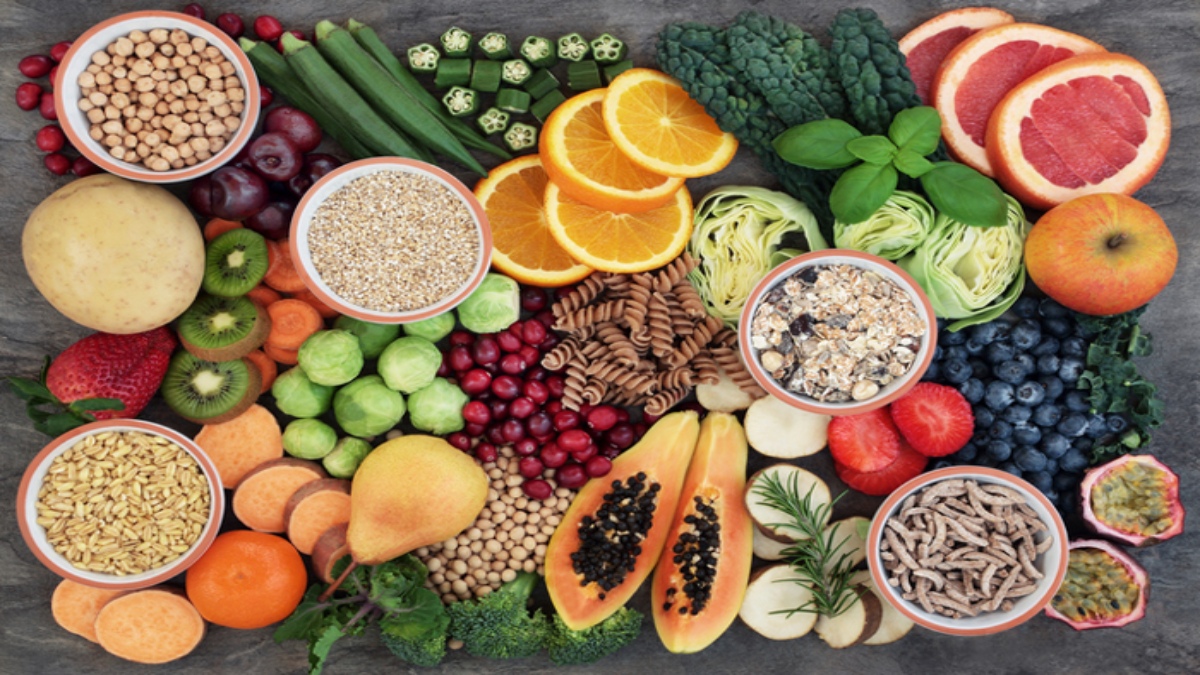


Autumn ends with the Diwali festival. Pitta gets calmer, less excited. People have cleansed their bodies by celebrating Diwali in the month of Ashvin in traditional ways. The earth is as if full of joy by the production of nutritious and tasty cereals and pulses and green vegetables. The season known as Hemant begins after Diwali.
Hemant brings in cold. This cold excites the kapha (cough) in the body, which in unison with the outside cold contracts the limbs and makes the skin dry; and in the absence of proper nutrition, even the flesh and the glands dry up and deplete. The nutrition and heat, which a person needs for the sustenance of his or her physical strength, are to be obtained and stored up in Hemant. This has to be put to use in the ensuing three seasons, that is, six months. Our elders say that winter is the best season for acquiring and storing the energy needed to sustain the body. In the winter cold, the skin contracts. The pores get closed, preventing the necessary heat required for nourishment from being wasted. With the internal heat being preserved, the digestion process gets quicker and more intense. The body demands more food and nutrition. New Year day is the first day of Hemant. Our scriptures have ordered that this auspicious day should be begun by a body massage with oil.
In the winter, a sweet diet is crucial for replenishing deficiency and providing nourishment. A sweet diet produces kapha which nourishes the seven body constituents and increases strength. Kapha also calms down the Pitta excited during the Sharad as also the Vata disturbance created in the cold season. We know that the rich, as well as the poor, eat as many sweets as they can afford, Hemant being the season of accumulation of energy.
The Doorva grass is especially worshipped in Hemant as there are many nutritious elements in it, which give strength. It purifies the blood and nourishes the foetus. Women who often miscarry are advised to take the juice of this grass.
The use of gourd is recommended in this season. From the point of view of Ayurveda, gourd destroys Vata and normalises Pitta. It also quickens the digestive process and removes intestinal congestion. It strengthens the nervous tissues of the brain and cures mental disease. Its use cures hysteria, insanity, and nervous diseases dominated by Vata. Gourd has been included in our diet to curb diseases engendered by the excitement of Vayu.
Great importance has been given to tulsi in worship and religious rites. Just as, in the month of Ashvin, dry sticks of the Pipla tree are used as fuel in yajnas for creating and maintaining a healthy atmosphere. Tulsi is recommended in Karthik. Tulsi removes Kapha and Vayu and being hot (like chillies) and bitter (like quinine) gives energy. The seeds of tulsi are also used to a considerable extent as nutritive. The use of tulsi is suitable in winter promoting digestion. Tulsi destroys worms and germs. If in this season there has been an overdose of sweet dishes, these foods are likely to remain undigested and decayed providing a ground for worms. Tulsi is recommended in balancing these bad effects.
When we are discussing nutrition and health, we can’t forget fruits and vegetables available in winter: Jujubes, amlas, sugarcanes, tomatoes, carrots etc. Nature provides iron in all these in large proportions as the body is in need of new blood and maximum nourishment. These are rich in iron, Vitamins B and C, and help purify blood and strengthen bowels. Just as sour things are given a dominant place in the monsoon and salt in autumn, so also sweet is dominant in winter. If there is an excessive intake of sweets in Hemant, instead of quieting pitta and getting heat and nourishment, it causes more harm. To be saved from this trouble, sour and salty diets are recommended as subsidiary flavours. Sourness helps in the digestion of sweets and salt prevents kapha from being produced and accumulated by the intake of sweets. Thus, sweet followed by sour and sour followed by salt in this season maintains good health.
CARROT HALWA
Ingredients: Carrots 500 g, Rock Sugar 200 g, Cardamom powder 1/2 tsp, Milk cream 11/2 tbsp, Raisins 5-6 pieces, Almonds 2-3 pieces, and Cow ghee 1 tsp
Procedure: Wash and peel carrots, grate them. Mix rock sugar powder and stem it for 8-10 minutes. Heat a pan add 1 tsp ghee and steamed carrot. Add milk cream, cardamom powder, and mix well cook it for 2 minutes.Garnish it with almonds and raisins and serve it.
SALAD
Ingredients: Tomatoes 4, Carrot 1, Tulsi leaves 1 1/2 tbsp, Crushed Black pepper 1/2 tsp, Black Salt 1 tsp, and Rock Salt 1/2 tsp
Procedure: Wash tomatoes and chop them into small pieces. Wash and peel carrot, grate it. Finely chop tulsi leaves. Mix tomatoes, carrot, tulsi leaves, black pepper, black salt and rock salt. Stir it well and serve it. One can add 1/2 tsp lemon juice if required.
AMLA SUBJI
Ingredients: Amla (Indian Gooseberry) 250 g, Ginger 5 g, Coriander seeds 1/4 tsp, Onion seeds (Kalounji) 1 tsp, Fennel seeds(Saunf) 1/2 tsp, Rock salt 1/2 tsp or as per taste, and Oil 1 tsp
Procedure: Cut into pieces, mix salt and steam it, grate ginger into thin slices. Heat oil add coriander seeds, onion seeds, fennel seeds and ginger. Add steamed amla stir it well turn off the gas and serve it.
With inputs from Art of Living’s Sri Sri Tattva Panchakarma experts.